Echoes of Ancient Lands
Pattadakal Temple Complex Karnataka India
Mother Masala Tours
Encounter Living Legends and Hidden Routes
Pattadakal Temple Complex Karnataka India. Pattadakal stands ias a significant site of early Indian temple architecture. Located near the Malaprabha River, this area reveals the influences of both northern and southern Indian styles in its group of monuments. Recognized as a Unesco World Heritage Site, Pattadakal marks an important moment in the history of temple construction. Its temples date mainly from the 7th and 8th centuries and were developed during the rule of the Chalukya Dynasty.
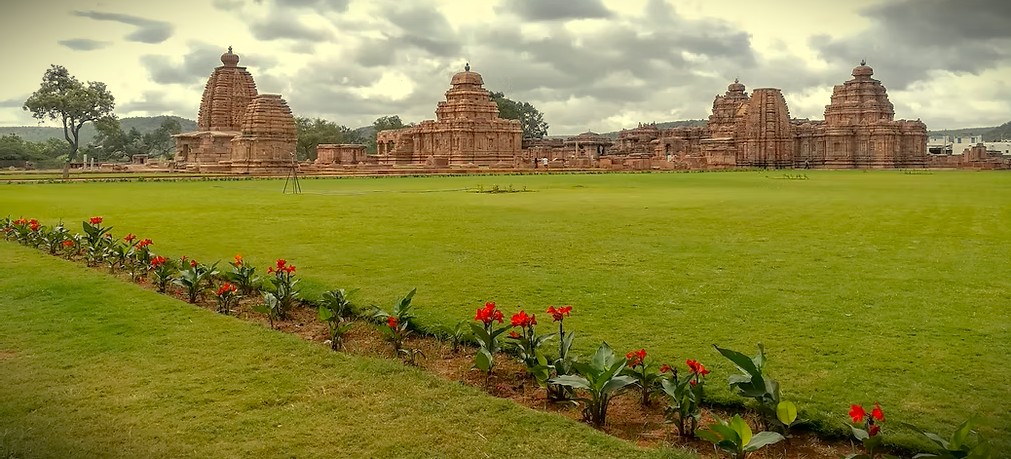
Pattadakal Temple Complex Karnataka India: Sacred Spaces
This complex brings together nine Hindu temples and a single Jain temple, all surrounded by green lawns and pathways. The site demonstrates a unique exchange of artistic and building techniques, showing the movement of ideas and styles from region to region. The temples’ stone walls, towers, and carved panels record legends drawn from Hindu and Jain traditions. Artisans used sandstone to shape figures of gods, musicians, and scenes from ancient epics. Today, walkers can trace the progression of temple design and carving skill along the site’s main path. Pattadakal is visited by people interested in history, architecture, or the quiet of old stone set against the river. Every structure here adds to our knowledge of cultural change in this region across centuries.
The Gods of Pattadarkal
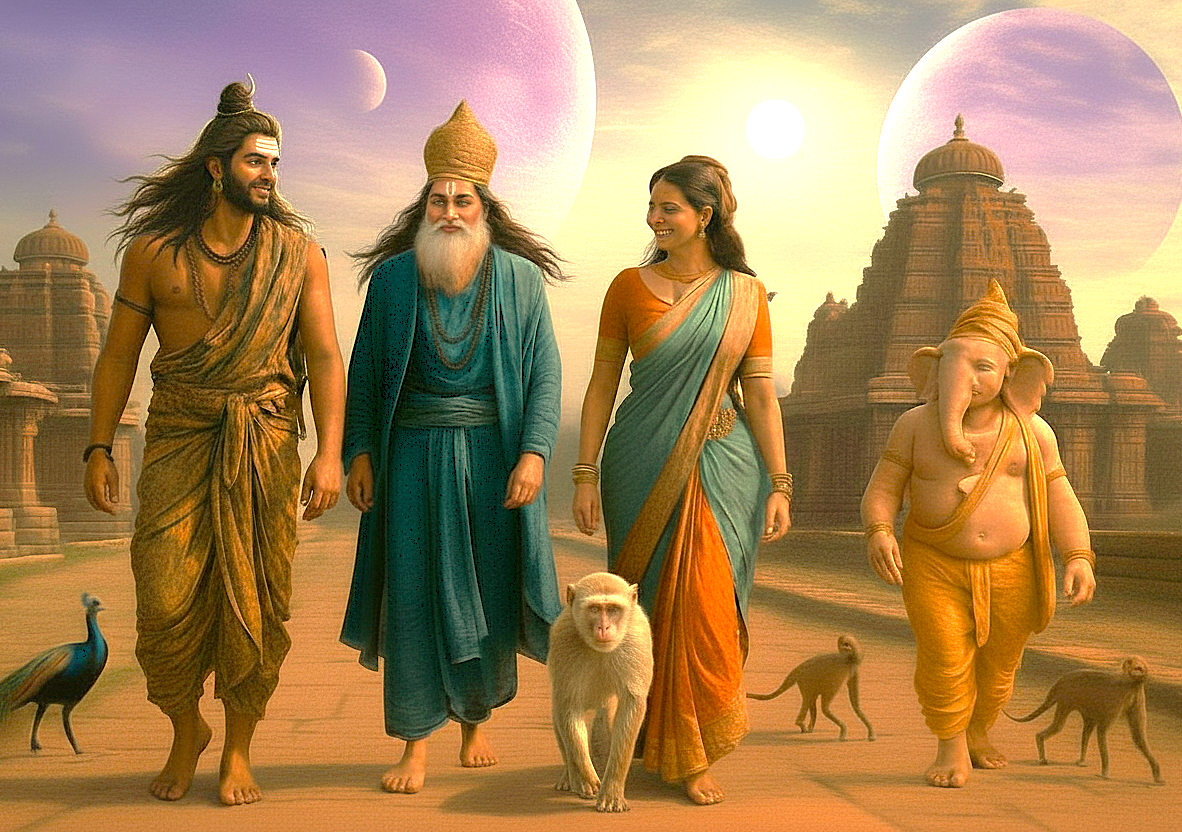
The Pattadakal temple complex is, first and foremost, a magnificent monument to Shiva. As the principal deity of the Chalukya Dynasty, nine of the ten major temples at this Unesco site are dedicated to him. While Shiva is the central focus, his son, Ganesha, is frequently depicted in carvings and has his own shrine within the Virupaksha Temple. Durga, a powerful form of Shiva's consort Parvati, is prominently carved in her warrior aspect as Mahishasurmardini. Brahma, the creator god, also appears in important relief panels, often on sanctum lintels alongside Vishnu.
Kadasiddheshwara Temple
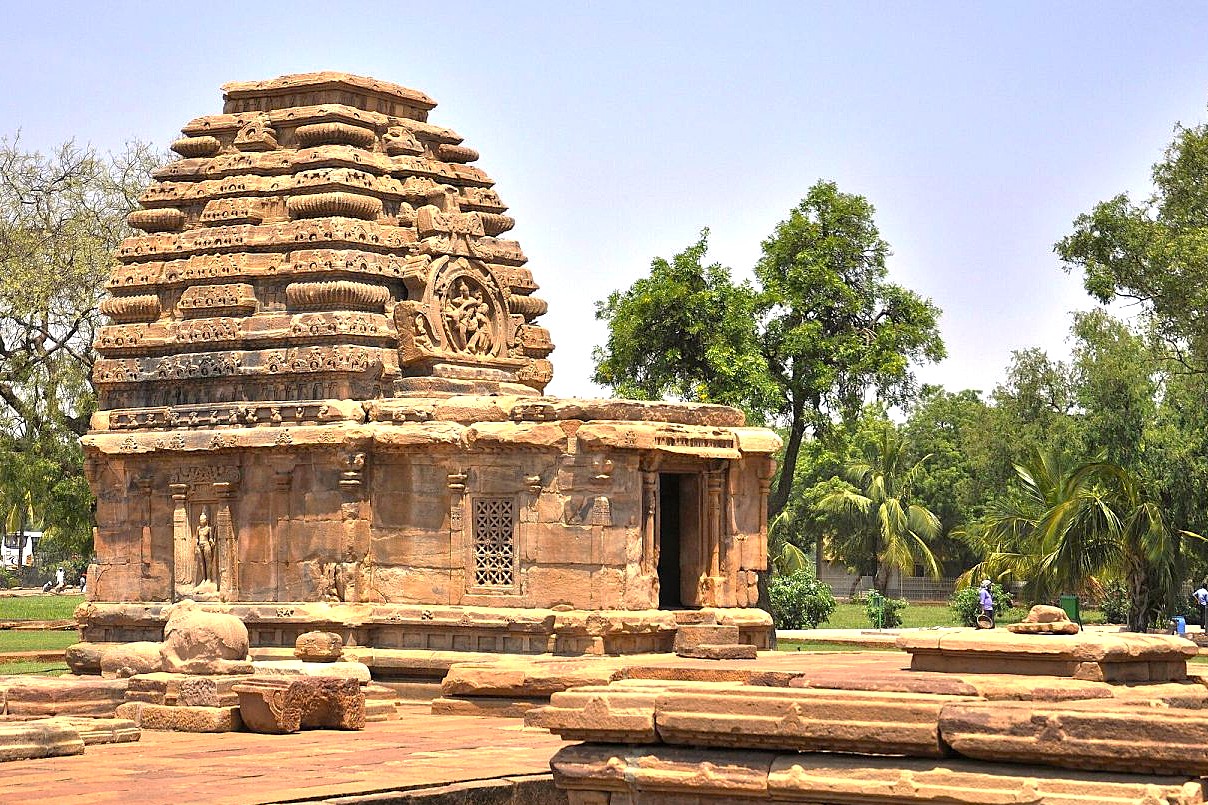
This temple stands on the north side of the complex and reveals a balance of Dravidian and Nagara architectural features. The entrance opens to a small hall with a square sanctum, marked by figures and low pillars. Decorative panels are set into the walls, with some images showing Shiva in different forms. A small tower rises above the sanctum, its stepped structure distinct yet fairly simple. Carvings focus on key icons, such as Shiva and Parvati, with a few scenes in the stone above the doorways. The exterior sides show worn patterns and some animal figures.
Jain Narayana Temple
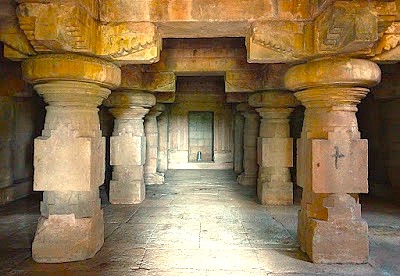
Pattadakal Temple Complex Karnataka India. Located just beyond the main cluster of Hindu temples at Pattadakal, this structure points to the presence of Jain communities in the region. Built somewhat later than its neighbors, it shows different motifs and a unique plan. The hall is supported by thick columns, leading to a sanctum that once held an idol of a Jain tirthankara. Its tower has a slender and gently curving design, topped with a small finial. Instead of Hindu deities, the wall panels here feature Jain symbols and religious figures. Work has protected the outer walls from erosion.
Jambu Lingeshwara Temple
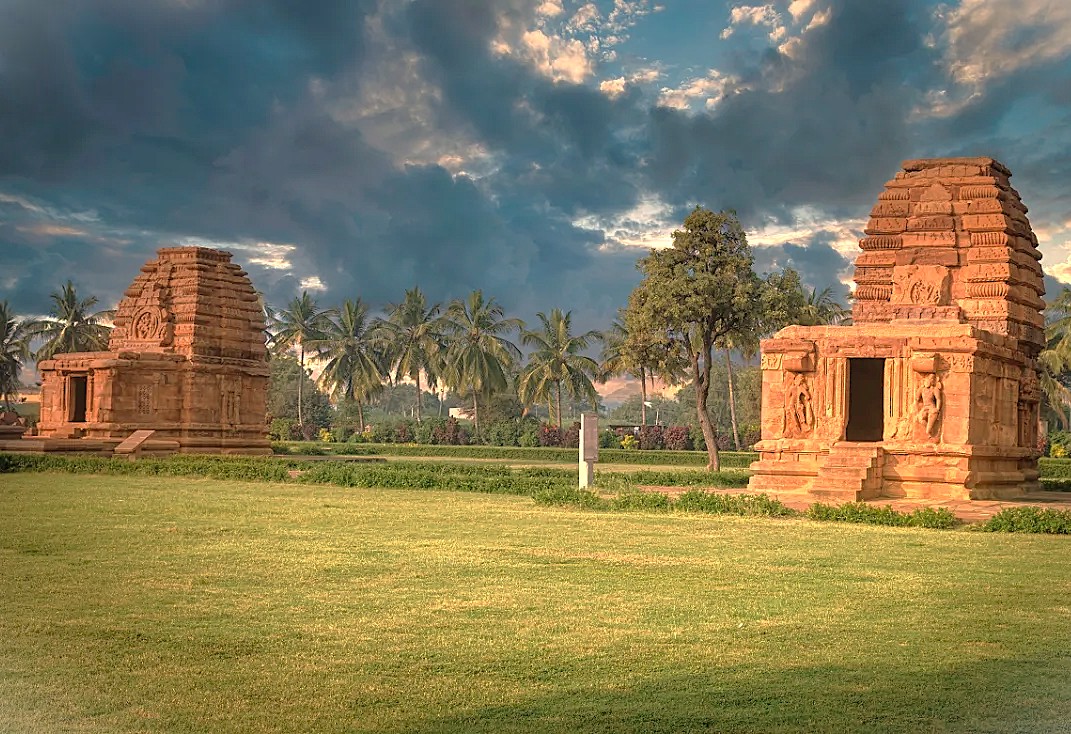
Built in a low, compact style, this temple is found toward the middle part of the Pattadakal group. Its short tower features clear lines and minimal ornament, reflecting the early phase of local temple design. The sanctum once sheltered a Shiva linga, and markers of Shiva can be found among the few carved details. Pillars inside the small hall are squat and sturdy, and some capitals still show faded carvings of animals and human figures. The outer walls carry a handful of shallow reliefs, adding decoration without crowding the stone surfaces.
Papanatha Temple
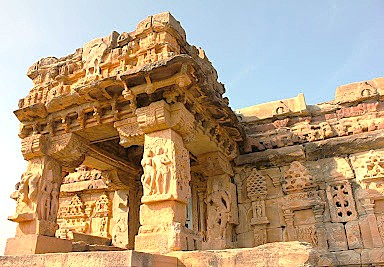
This temple sits slightly away from the main cluster at Pattadakal and marks a clear blend of architectural forms. Unlike other shrines, it extends lengthwise with a long hall leading into the sanctum. Intricate sculpture work appears both on the inner columns and on the outside panels, portraying deities, dancers, and stories from Hindu epic texts. The roof rises in stepped stages with a slightly curved tower, showing both southern Dravidian and northern Nagara influences. Reliefs on the walls are detailed, drawing attention to mythic battles, divine musicians, and processions.
The Sangameshwara Temple
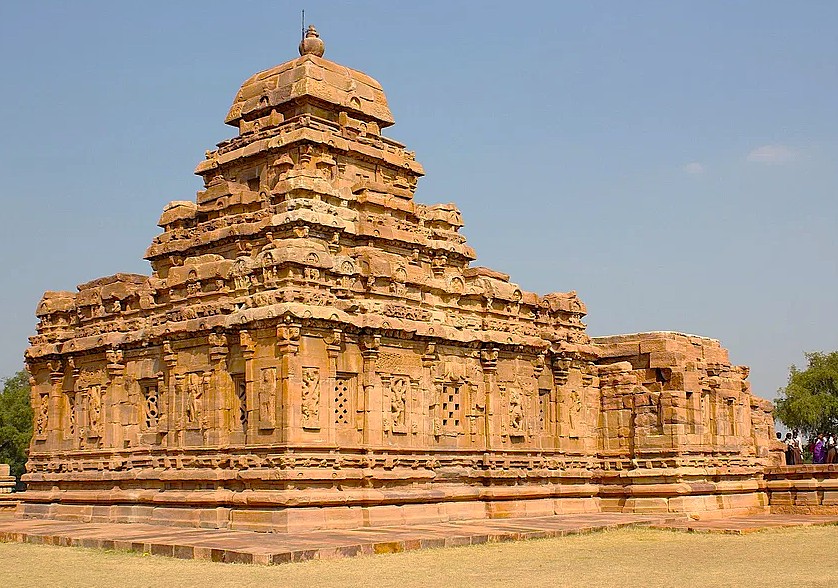
Pattakal Temple Complex Karnataka India. This early temple was begun by King Vijayaditya and stands out for its distinctly Dravidian style. Set near the front of the Pattadakal site, it displays a square sanctuary, porch, and open hall. The outer surfaces are well-decorated with bands of sculpted figures and patterns, while the tower above is built in tiers. Several important depictions of Hindu gods can be seen among the wall reliefs, including panels showing Shiva and Vishnu. Pillar bases and capitals are carved with geometric motifs. Inside, the hall is well-lit by small windows.
India - Come For Stories That Need Witnesses, Join Us
At Pattadakal, we see stone temples arranged along flat ground. Each temple has its own shape, size, and carvings set into the walls. As we walk, the paths curve gently from one structure to the next. Some of us pause at the doorways, looking at marks cut into old stone. The ground is clear, with open space around the buildings. We notice the sound of sandals on stone, low voices, and birds in the distance. There is time to move at any speed and step into the shade beneath stone arches. Simple signs point out sculpted panels or tell basic temple names. We stay until the afternoon sun changes the color of the wall
The Mutual Benefits of Exchange
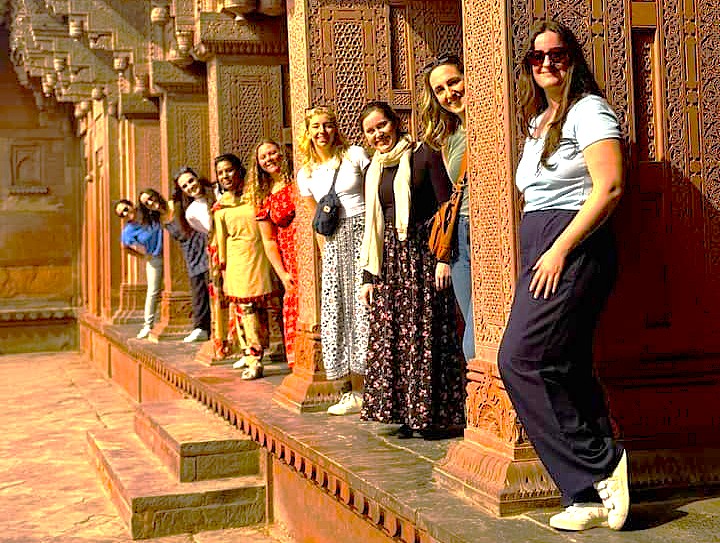
Pattadakal Temple Complex Karnataka India. Exchange here is simple and direct. We give information about our homelands or daily habits, and local people share skills or ways of doing things. Street stalls may offer us fresh food, while we offer in return a story from our own travels. At certain stalls, locals might us how they fold a mat or shape dough, while we share a recipe or a new use for an ingredient. The process is open, moving both ways. Each person brings something - items, stories, or time - to this meeting. In these small exchanges, both sides receive and give, and the day continues without the need for anything extra beyond these easy trades.